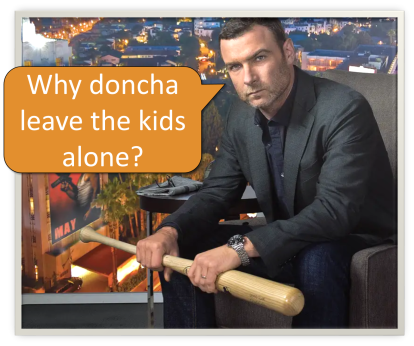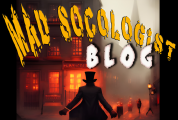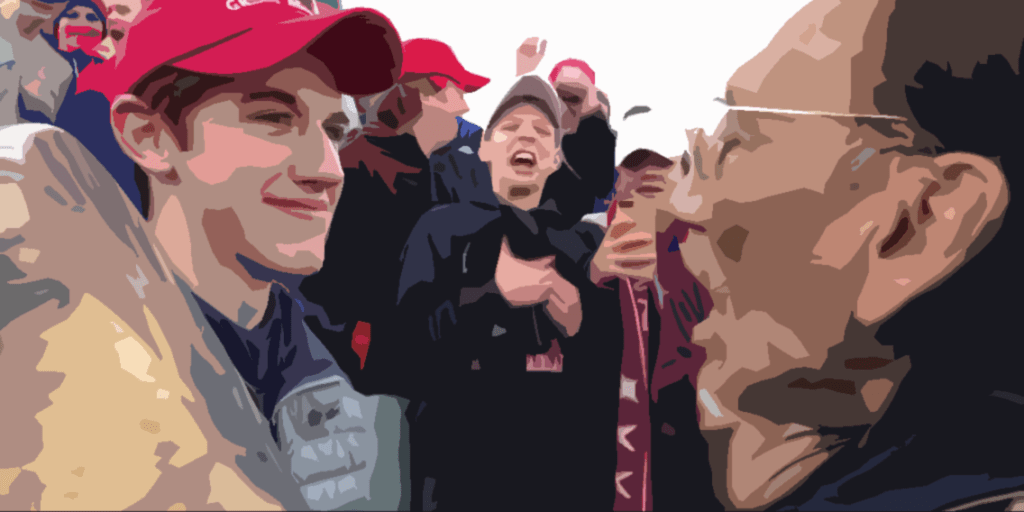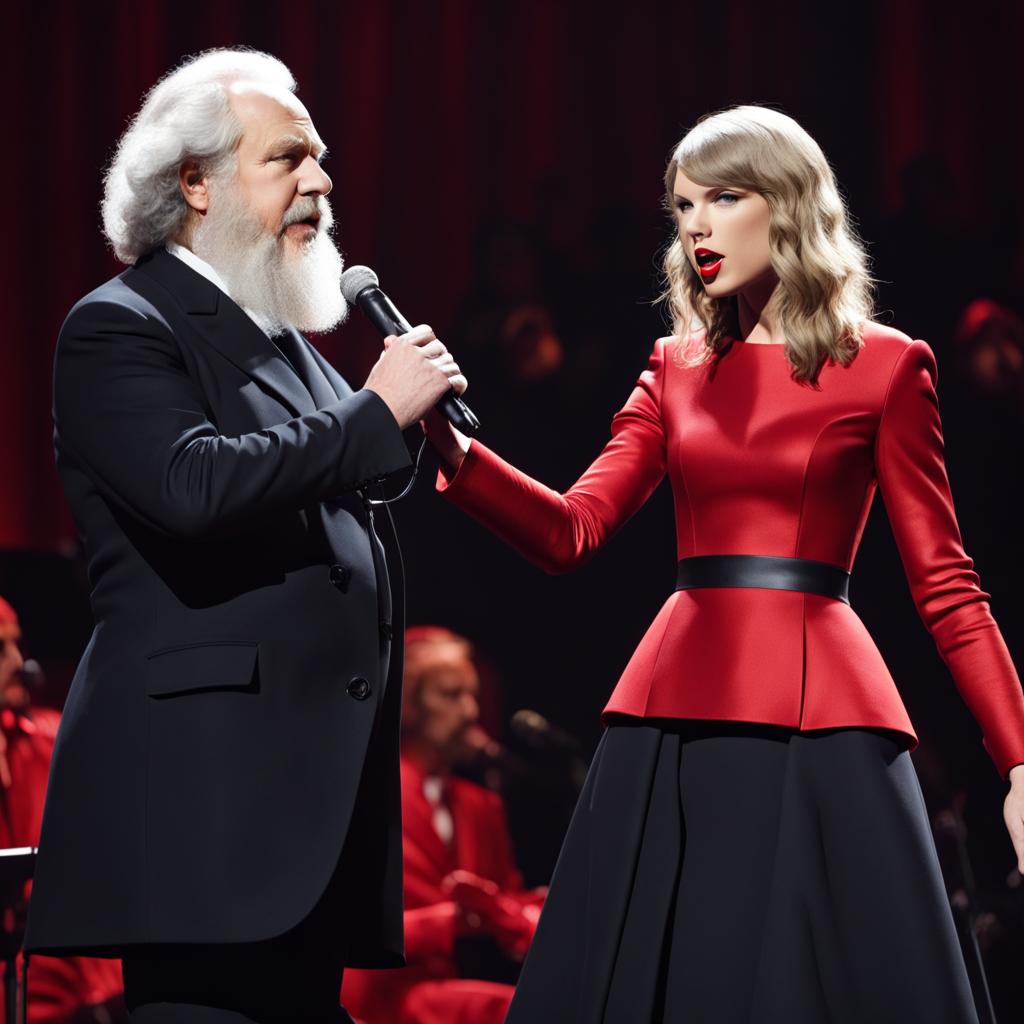MAGA KIDS ON CONTROLLING THE NARRATIVE
I started my career, pre-sociology, as a counselor. The framework in which I was trained was William Glasser’s Choice Theory (then called Control Theory) and Reality Therapy.
Reality Therapy is, arguably, a very sociological form of therapeutics because it focuses on the observable behaviors and definitive goals of the individual rather than on the individual’s feelings and internal drives. The idea is to understand what the individual is trying to accomplish by choosing certain behaviors, then teach them more normative behaviors for achieving the same goal, if possible.
Therapy sessions almost always start with some variation of the question, “what are you doing?” In a residence program like I was working in, that question is most often asked in response to the client doing something wrong. The client almost always knows they are doing something wrong and the last thing they want is someone pointing that out and making them talk about it.
So clients did everything they could to not talk about what I, the counselor, wanted to talk about. There were four consistent strategies:
- Deflection: “What are you doing?” “Jimmy did the same thing yesterday and you didn’t say nothin’!”
- Passing the Buck: “What are you doing?” “It wasn’t me, it was Billy!” or “Billy made me do it!” or “I was minding my own business and Billy…!”
- Minimizing: “What are you doing?” “What’s the big deal? It’s just an A-Tub.”
- Redefining: “What are you doing?” “I didn’t do anything wrong. You just saw me wrong.” –This strategy is related to contemporary concepts of gaslighting.
Some kids were really good at controlling the narrative. They were tricky, and it took an experienced and focused counselor to stay on track and follow through with the therapeutic process.
I often wonder if such young men, the really talented ones, later went on to work as “crisis consultants” or work for P.R. firms like the one hired by Nick Sandmann’s family. I wonder if any of my young men took part in what turned out to be a master class in controlling the narrative. On this particular issue, one could see all of the techniques used above culminating in one of the clearest experiments in gaslighting I’ve ever seen.
Here’s how it went down. A video was released in which the world saw young men, many of them wearing MAGA hats, surrounding and ridiculing an older, Native American man who was playing a drum and singing an indigenous song. Central to the video was a young man directly in front of the older man, staring the drummer in the eye and smirking.
When you first saw this video, what did you think? It was probably something along the lines of ‘Wow! These teenage bigots have surrounded this old/elder Native Man and are ridiculing and trying to intimidate him. And that smug little punk standing in front of him is trying to bully him.
That was your immediate reaction based on what you saw in the video. The kids are, in fact, surrounding the older man. They are clearly ridiculing him. This ridicule is specifically ethnic in nature, mocking the indigenous song, doing the tomahawk chop. And the boy at the center is certainly taking a threatening posture, standing erect, puffing his chest, squared off with the older man and staring at him with an unwavering smirk. The smirk is clearly not a smile.
Those are the behaviors that you saw with your own eyes. If you interpreted these behaviors as exclusionary, bigoted, ignorant and intimidating, that is certainly the most valid interpretation. Consequently, if you are offended by ignorance, bigotry, intimidation and bullying, and I think most of us are, then you certainly had a negative impression of these boys, later identified as Nick Sandmann at center stage and students representing Covington Catholic High School from Kentucky. All reasonable people who viewed the video were offended.
Furthermore, the microcosm of this event at the foot of the Lincoln Memorial, was felt to be an allegory for conflicts happening in the larger society. This issue had resonance because it forced us to confront the very real racism, bigotry, scapegoating and xenophobia that has been whipped into a driving narrative in our culture and polity.
Well, here’s what happened afterward.

Nick Sandmann’s parents hired a PR firm to protect their child’s reputation because…well, don’t all parents hire PR firms when their children are in a spot? I mean, that’s just Parenting 101. If that doesn’t work you go Parenting 102, or straight Ray Donovan. The firm allegedly wrote or consulted on a written response from Sandmann. Spoiler, the response did not included anything like the phrase, “I was wrong and I apologize for my actions. I regret any harm and hurt feelings that my actions may have caused.”
Around the same time, a longer, more comprehensive video of the incident was released. The video shows African American men, identified as members of a recognized hate group the Hebrew Israelites, hurling insults at the boys and pretty much everyone else. Nathan Phillips, the Native Elder in the center of the video, and some fellow activists then enter the scene, keeping rhythm with drums and singing an AIM song/prayer known as the Yellow Thunder Song. The Native American activists approach the CovCath boys singing the song. Phillips claimed to be doing this in order to reduce tensions between the MAGA youth and the Hebrew Israelites.
The news field was fertile for the PR firm’s attempt to turn the narrative as the alternative story was embraced by the Right-Wing FoxNoise Propaganda machine. The new video was billed as a game changer that vindicated the action of the CovCath MAGAs by adding different context. Of course, the media was accused of pushing a left-wing agenda, that’s pretty standard practice. Sandmann was given airtime on the left-wing Today Show to give his side of the story.
And that so-called left-wing media fell in line. Reporters from all over the media spectrum, from big venues to small, offered their obligatory mea culpa Tweets and largely fell in line with the new narrative. The CovCath MAGAs were just misunderstood. They were just dancing to the rhythm. They were just minding their business when, all of a sudden, this crazy guy comes over and beats his drum in their faces. If anything, Nick Sandmann and his fellow MAGAs were the victims. In fact, they were heroic in their reserve, and thank God for Nick Sandmann, taking the lead and defusing the situation. He was just smiling to be friendly. And look at that Nathan Phillips guy. He has some questionable stuff in his background. He’s a known provocateur and liar.
Stupid liberal media and their anti-MAGA bias agenda.
It was absolutely amazing, like a perfectly orchestrated dance routine. Really a work of art. Impressive.
And every single piece of this routine was specifically designed to deflect, pass the buck, minimize and redefine the real story. Namely, the CovCath MAGAs really did surround, intimidate and mock the ethnicity of an Elder Native American activist who was doing nothing but singing a song and beating a drum.
When the new videos came out, I took another look. After all, I’m always interested in testing my assumptions and proving myself wrong. But, no. I really didn’t see anything in the newer videos to change my mind about the CovCath MAGAs and their collective bigotry and ignorance. That is the central theme. But man, we are under a great deal of pressure to unsee what was right in front of us, a group of kids acting collectively on prejudice.
The new videos do, in fact, add context. We learned that there were external stressors, the Hebrew Israelites hurling insults. The CovCath MAGAs, according to the story, asked their chaperones¹ if they could respond to the insults by doing their school fight chants. This inter-group interaction set up a conflict cycle between the CovCath MAGAs and the Hebrew Israelites. This matters if you want to understand the initial dynamics, there was already stress and anger before the confrontation with Phillips and his group. But it is not relevant to how the CovCaths responded to Phillips. There’s nothing about a conflict cycle, about intergroup tensions, that necessitates bigotry, mocking and intimidation. The CovCath MAGAs could have responded differently.
We also saw Phillips approach the CovCath MAGAs beating his drum. In essence, this shows that the Native American activists intentionally put themselves into the situation and potential harm’s way. Again, this is a factor, but is an aside to how the CovCath MAGAs responded. They really did surround the Native American activists. They really did mock him and intimidate him. This mockery and intimidation was dripping with racism and ethnic stereotyping. It was a display of bigotry as a group norm.
In other words, deflecting to the Hebrew Israelites or to the Native American activists, passing the buck to Nathan Phillips or to the liberal media, minimizing the kids actions as just dancing or just kids being kids, and redefining their behaviors as anything from childlike to heroic, is just a distraction from the real issue. The real issue was and remains the kids’ actions. What did they do? How did they respond to the situation? What do their responses say about the norms of the group? Most importantly, how can these actions be addressed, challenged and changed.
If we are interested in more than just righteous indignation and expressing outrage, we do have to acknowledge the complexities of this interaction. After all, group dynamics are not like individual decisions. Groups develop their own norms, and these norms influence the decisions of each individual in the group. When that group is confronted with conflict, the group will respond to this stressor in ways that is distinct from how an individual will respond.
Namely, under stress, individuals within the group are under more pressure to conform to group norms and to demonstrate group solidarity. So when we make sweeping generalizations about the kids in the group being racist, we must acknowledge that that may not be valid. Certainly the group norms are influenced by cultural ignorance if not outright racism. The norms binding the group were premised in bigotry, therefore it’s safe to assume that bigots, be they openly racist or unwittingly acculturated to racism, were significant norm setters for the group. That being acknowledged, anyone in the group who is not bigoted is under significant pressure to conform to bigoted norms. They are what Robert Merton referred to as Non-Prejudiced Discriminators.
So, yes, just because someone was in the CovCath MAGA group does not mean they are bigots. They may not even be MAGAs per se. However, there were certainly enough bigots in the group to shape the group norms, and everyone in the group conformed to those discriminatory norms by their participation or their acquiescence. This is contemptible.
What about Nicholas Sandmann, the young man at the center of the controversy. It’s difficult to say definitively. My first impression is that he was trying to intimidate Phillips. That’s what his body language communicated to me. Squared shoulders, intent stare, chest out, making himself look larger. And that smirk! I think my initial reaction is valid. I know bullies, and his was the posture of a bully. On the other hand, I have a bias against bullies, I really don’t like them, and the context of the situation is overall disgusting. So is my initial reaction to Sandmann influenced by my biases? I have to be responsible and acknowledge that it may be.
To control for this, I’m willing to take Sandmann at his word that he was not trying to intimidate Phillips. That he was trying to diffuse the situation. Taking him at his word means interpreting his actions as inappropriate to the situation and to his status as a young man in the face of an older adult.
First, our society expects that, other factors being equal, young people should give deference to adults, especially to elders. This is an underlying issue with the interaction between Sandmann and Phillips. Sandman took it upon himself to interact with Phillips as an equal at the very least.² Ask yourself under what circumstances it would be appropriate for a young person to square themselves with an elder? This diminishes Phillips’ status as an elder. That is not appropriate according to our cultural norms…except in terms ethnic inequality. This interaction is reminiscent of the Jim Crow norm of referring to adult black men as “boy”. In ethno-states, the dominant ethnicity relegates the subordinate to the status of children.
Secondly, if Sandmann really was intent on diffusing a tense situation, his actions demonstrate that he does not have the skills for doing that. Squaring your shoulders with someone and looking them in the eye, presenting yourself as larger, standing in their path. These are all intimidating behaviors. If Sandmann wanted to de-escalate, he needed to use conciliating behaviors, making himself look non-threatening. In essence, he should have done exactly the opposite of what he did. He needed to stay out of Phillips path, interact with him from 2 o’clock or 10 o’clock, avert his gaze and constrict his body posture, usually by leading with a shoulder rather than his chest.
Thirdly, Sandmann needed to realize the power dynamics in which this confrontation took place. His was the larger group, already agitated. Phillips’ was the smaller group and was quickly surrounded and engulfed by the larger CovCath MAGAs. Where there is a clear power discrepancy, one should not try to diffuse an inter-group conflict by confronting the weaker group. The weaker group does not have the power to de-escalate. It’s also very difficult for someone who is not a member of a particular group to de-escalate that group. He has no standing in that group. If Sandmann intended to de-escalate the situation he should have done so by focusing on the dynamics of his own group.
None of this means that Sandmann was lying about his intentions. It does not mean he is a racist. It may mean he simply lacked the skills necessary to accomplish his stated goals. This is where the chaperones need to be confronted.³ If this were a school event, and Covington Catholic High School uses students as activists, they should provide training on group dynamics, group conflict and de-escalation before they put children in a situation likely to include such tension.
Furthermore, Covington Catholic High School must confront the bigotry that is insinuated in the school culture. It’s clear that this is true. Covington Catholic High School may not openly condone bigotry, but it’s definitely there in the student body, and it manifests itself pretty regularly. If the school does not want to be known as a center of racism and bigotry then they need to confront the fact that MAGA hats have a bigoted undertone. That blackface has a bigoted history. That calling the only black player on a basketball court “caramel” is a racist act. Trying to deny and deflect this reality does not help the kids.
This incident struck a chord because it presented a microcosm of the underlying conflicts of American culture. Like all such stories, there’s an incentive to use the imagery to present a narrative that describes these conflicts in terms that confirm our preconceptions and support our goals. The narratives we use to tell these stories is always far simpler than the underlying realities. So our narratives often distort the picture in overly simplistic ways. Yes, it’s simplistic to describe the CovCath kids as “racist.” Yes, it’s simplistic to refer to them as heroes. This was a more complex slice of the dynamics associated with everyday American culture.
What fascinates me, however, is how artfully and effectively the underlying complexities were used by professionals to gaslight us all into thinking that we didn’t see what we saw. As a sociologist I understand the power of discourse in shaping reality. I understand that it’s possible to do this intentionally to greater or lesser effect. When I actually see it happen, and happen so quickly at that, it still takes my breath away.
Harking back to my counseling days, I have to stop myself and ask, “What is happening? What do I observe?” As a sociologist I have to ask, what are the underlying structures, interactions and historical elements of what I’m observing? If we don’t want to be victims of gaslighting, we would all do well to follow this process.
- We might want to question the quality of the chaperones.
- I would interpret Sandmann’s micro-behaviors as indicating an air of superiority.
- It’s interesting that the chaperones are a forgotten part of this story.




![[Defense of Democracy] The War on Books and Teachers in Florida](https://madsociologistblog.com/wp-content/uploads/2023/04/dispatches-logo.png?w=768)

Leave a comment